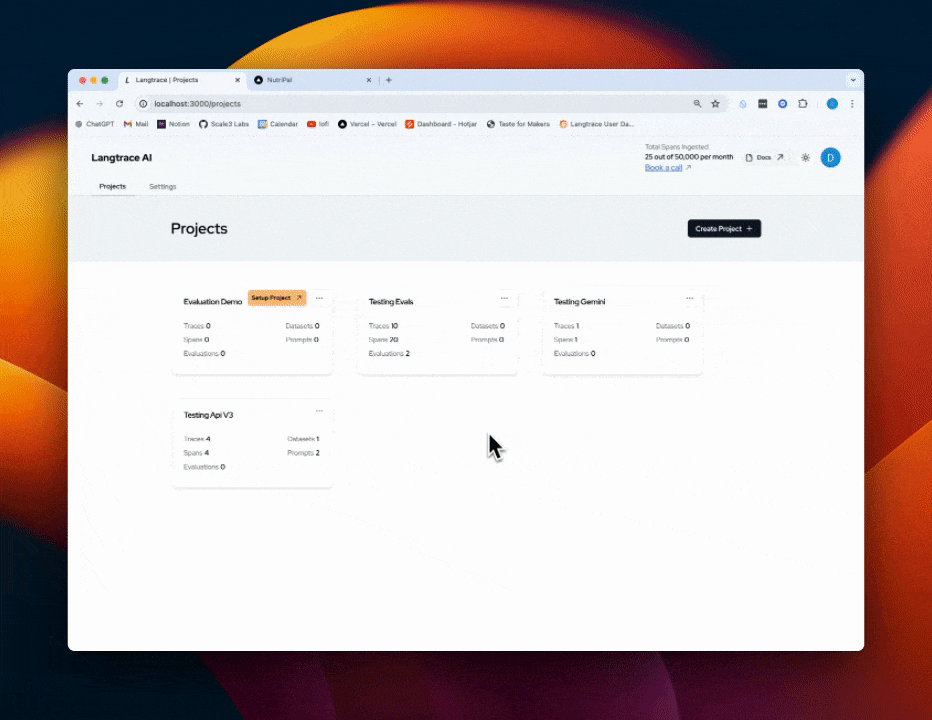Enhancing Your LLM App with User Feedback Using Langtrace
Dylan Zuber
⸱
Software Engineer
Jul 25, 2024
In this post, we'll explore how you can enhance your LLM applications by collecting and analyzing user feedback using Langtrace. We’ll walk you through importing a React component for thumbs up and thumbs down feedback and making an API request to send this feedback to Langtrace Cloud. Let's dive in!
Example Usage

Passing User Feedback
Collecting user feedback is essential for measuring the performance and accuracy of your LLM applications. Langtrace SDK enables you to pass user feedback as scores, providing valuable insights into user satisfaction.
Types of Feedback
Binary feedback (thumbs up/down)
Numeric ratings (e.g., 1-5 stars)
Textual feedback
Implementation Guide
Here's a step-by-step guide on how to implement user feedback collection in your Next.js project using a React component.
Step 1: Wrap your LLM function call with Langtrace
First, wrap your LLM API call with Langtrace.withLangTraceRootSpan() to receive the spanId and traceId needed to send feedback. In this example, I have created an OpenAI function call in a NextJS route.
Step 2: Setting Up the API Route
Next, set up an API route in your NextJS project to handle the feedback submission. This is the API route where you can send the user feedback to Langtrace Cloud.
Step 3: Creating the React Component
Finally, create a React component to collect user feedback using thumbs up and thumbs down icons. In this example, when the user clicks on the icon, the /api/feedback route we just created will be called with the necessary data to successfully store feedback in Langtrace!
Example Result
Component:

Feedback in Langtrace:

Best Practices
Keep feedback collection simple and non-intrusive: Ensure that the feedback process is quick and easy for users.
Clearly communicate how feedback will be used: Let users know that their feedback helps improve the application.
Act on feedback to improve your application: Regularly analyze feedback and implement changes based on user suggestions.
Regularly analyze feedback trends: Use Langtrace Dashboard to identify patterns and trends in user feedback.
Conclusion
By following this guide, you can efficiently collect user feedback in your LLM applications using Langtrace. If you want a more detailed look into how this works, checkout our example Github Repo: Evaluate-LLM, Implementing user feedback mechanisms not only helps you understand user satisfaction but also provides valuable data to enhance your application's performance and accuracy. Start collecting feedback today and make your LLM applications better with Langtrace!
Join our Discord community for the latest updates and engage with fellow enthusiasts. Should you encounter any challenges or queries, don’t hesitate to reach out — we’re here to assist. Start your journey of enhanced observability and optimization with Langtrace today.
Ready to deploy?
Try out the Langtrace SDK with just 2 lines of code.
Want to learn more?
Check out our documentation to learn more about how langtrace works
Join the Community
Check out our Discord community to ask questions and meet customers


